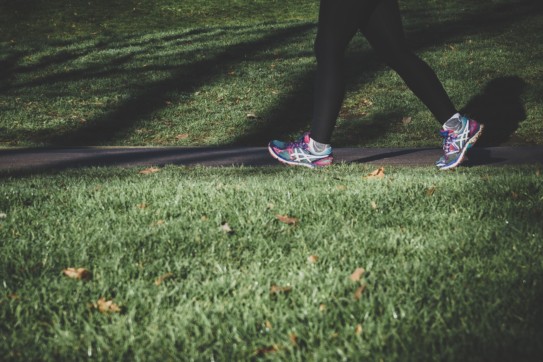Going Virtual is Not Enough: Reimagining Traditional P2P Walks for Fall 2020 and Beyond

In-person peer-to-peer (P2P) events have been one of the types of P2P campaigns most affected by the COVID-19 pandemic. The in-person to virtual paradigm of the Spring was very reactive in nature, propelled by uncertainty and fear. Moving into Fall 2020 and Spring 2021, we now understand more about the necessary precautions, such as the importance of masks and social distancing. We also know that regardless of virus activity, there will be people who will simply not be comfortable returning to public gatherings for some time.
One of the most popular and pervasive in-person campaigns is the traditional walk, where participants raise money and walk a predetermined distance. These events typically attract participation from a broad-based audience without an implicit need to be athletic. Most people do not attend a walk because they love the act of walking. They attend because they love the cause, the organization, or the person who invited them. The walk is not the draw, the community is the draw. Participants not only raise funds for the causes they care about, but they are empowered to spread awareness, to honor a friend or family member, to honor a loved one lost, and to be recognized for their efforts and achievements.
By removing the ability to have a walk in its traditional sense, we lose the pinnacle of the event season. In reimagining these events, we must take care to harness the feelings of empowerment, of recognition, and of community that are so cherished about non-competitive events, not only on “event day”, but all season long.
Walk registrations have typically been driven by two things – commitment to the cause and desire to join a community committed to the cause on event day. Some participants are so dedicated to the cause they will participate even if there isn’t a largescale in-person event. Other people will need a lot more convincing.
Life’s most memorable occasions are fleeting – weddings, graduations, a trip to the zoo, a concert. What is it about special events that are so special? It’s that they give people something to look forward to, something that takes them out of their everyday experience. It’s also the culmination of the community that’s been cultivated leading up to the event, now joined for a collective experience.
Though it may have worked as a reactionary measure in the Spring, a zoom meeting or Facebook Live will not be enough to deliver that collectively memorable experience, especially for those who feel ready to participate in a socially distant way. Reimagined event formats will fuel the on-the-ground experience over the next several seasons.
Moving Beyond Virtual – The Reimagined Walk Hybrid
The key to driving engagement and community is to give participants the freedom to choose their level of involvement and – this is just as important – to provide them with the tools, ideas, and the recognition necessary to fuel their motivation. Reimagined events should have two, or even three, of the below activities as part of their new experience.
- Organizationally-driven on-the-ground activities: As other industries adapt to social distancing and masking protocols (think restaurants and daycares), so too can traditional walks. The key is to find other ways to gather safely, be it a series of smaller gatherings, or something participants can do publicly on their own time. What was once a walk may now become a moving monument, a participant or honor wall, or a series of socially distant strolls.
- Community-driven on-the-ground activities: When the full walk community can’t physically gather on event day, smaller and potentially different communities can substitute and actually make the movement stronger. In neighborhoods where birthday parades, bear hunts, and makeshift graduations ceremonies have been commonplace, the creation of neighborhood events and gatherings are a fun and appropriate choice for socially distant events. This doesn’t simply mean that a family walks through their neighborhood, but it actually encourages them to involve the neighbors as well.
- Virtually-driven activities: For those who are hesitant to take part in the on-the-ground components of the event, strong virtual experiences similar to what we saw in the Spring of 2020 will still be necessary, albeit bolstered by one or both of the aforementioned activities. Bringing the larger community together virtually as a part of that experience will pave the way for in-person participants in the years to come.
Autism Speaks Walk on Wheels:
Autism Speaks Walk is “the world’s largest fundraising event to enhance the lives of people with autism today and accelerate a spectrum of solutions for tomorrow.” In reimagining their traditional walk event, their innovative staff is offering participants one safe organizationally-driven activity and two community-driven options.
- Option #1: “The Walk on Wheels is an organized interactive car parade and festival driven by kindness. Inspired by the car parades that have brought joy to so many during these times of social distancing, we are offering this option to convene our community, while safely spread apart, as we hit the road to celebrate together.” Some events are seeing significant demand and as a result have required RSVPs and car-based fundraising minimums.
- Option #2: Bring Walk Home encourages participants to “walk 1.54 miles with your friends and family (for the 1 in 54 U.S. kids with autism) or get together with your team to celebrate locally while maintaining safe social distancing recommendations.”
- Option #3: Walk to The Beat of Your Own Drum inspires participants to “get their creative wheels turning” with ideas like a neighborhood car parade, community scavenger hunt, sidewalk chalk art installation, or online Bingo.
Canadian Cancer Society’s Neon Night for Childhood Cancer:
Neon Night for Childhood Cancer is a non-competitive fun run/walk that takes place at night. Participants are encouraged to “wear their brightest gear to help illuminate the night all in the fight against childhood cancer.” In reimagining their fun run/walk, staff recently announced changes to their annual campaign. Participants will be offered three different ways to get involved (some may choose all three!) as well as a virtual experience on what was previously the day of the event. This greatly expands the geographical location of those who can participate as well.
- Option #1: Participants are able to walk, run, or roll alone or as a team (while social distancing) any time between September 1 and 18, and submit pictures and videos.
- Option #2: Participants are invited to paint their porch or workplaces neon, with judging taking place on September 18.
- Option #3: Participants can participate in a poster contest to support young cancer warriors, with judging also taking place on September 18.
- Open to all: Participants can tune in on the evening of the originally planned event, September 19, to hear event updates, learn how much has been raised, honor top participants and cancer warriors, and announce the winners of the contest.
Though under trying circumstances, the necessary reimaging of P2P events will ultimately be the jolt this traditional fundraising sector was craving. It will allow staff and volunteers to get their creative juices flowing, to step out of the organization’s comfort zone, and to try something new. This is the time to take risks. This is the time to listen carefully to the community.
The year 2020 will be remembered for many things, and among them, it will be the year that changed the traditional P2P fundraising event. By granting yourself and your staff permission to truly reimagine your event, you will breathe new life into your events, your communities, and in the long run, your mission.
To learn more about reimagining P2P campaigns during the COVID-19 pandemic, read Blackbaud’s latest eBook: Reimagining Your Peer-to-Peer Fundraising Programs: A Guide to Evolving Beyond Virtual



